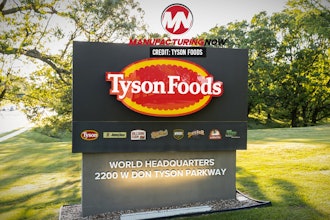
 Mike Edgett
Mike EdgettFor everything there is a season, as those in the Food and Beverage Industry are keenly aware. In parts of the world, harvest season is here; for others, it is spring planting. And, as 2018 coasts to year-end, it is also the season for summarizing achievements and setting new goals. Eager to capitalize on the growth momentum, F&B companies will soon be planning 2019 budgets and prioritizing the major initiatives for the coming year. With many game-changing innovations now available, companies should start early to strategize on the technology investments that will be key to seizing new opportunities.
Introducing new products is one of the most important ways companies can take advantage of the changing trends and consumer interest. Yet, successful new product introductions and business transformation require more than innovative R&D, creative marketing, and focused sales execution. Modern ERP solutions, updated to the current release, give companies the necessary data and market insights to respond quickly to change — whether developing a new product for a specific demographic or changing formulations to include a plant-alternative for protein.
Writing On The Wall
The future continues to look bright for the industry, with many factors driving interest and increased sales. Unique dining experiences, regionally sourced farm-to-table options, and a variety of new products are just some examples of the trends that consumers are embracing. Here are some of the trends—and ways technology relates:
- Natural And Healthy Choices. Consumers have become well-educated and highly opinionated about their food. Many consumers have negative perceptions of GMOs, despite safety assurances from leading, global scientific organizations: 87 percent of consumers globally (49 percent in the US) think non-GMO foods are either somewhat or a lot healthier and 55 percent also believe GM crops are not good for the environment. Food companies therefore need to have tools to monitor and trace their incoming raw materials to make sure that the ingredients used are matching the label claims made in their finished products.
- Mindfulness Of Social Issues. Consumers, especially Millennials and Generation Z individuals are highly aware of social issues and are willing to spend more for goods which support a certain cause or concept. They are also willing to invest time into researching the path to the table and expect visibility and traceability of ingredients. Many companies are providing details of ingredient sources on their website. This may require upgrading your existing solutions to make it easier to track and trace resources.
- Sustainability And Eco-Friendly. Consumers are demanding that the companies they support maintain a minimal footprint. With the help of Enterprise Asset Management (EAM) solutions, food processors can manage preventive maintenance of assets, including monitoring for energy usage and waste. Internet of things technology (IoT) and embedded sensors can help control physical attributes, like temperature control, while still economizing energy usage.
- Consumer Lifestyle Changes. Consumers have many options for dining, from eating at gourmet restaurants to prepackaged convenience foods which are heat-and-serve or ready-to-make. Busy lifestyles will continue to create a demand for fast and easy to prepare foods, including a whole new breed of healthy vending options. Packaging for convenience foods is always important. Labels and package claims must appeal to consumers, as well as meet regulation compliance. PLM solutions help manage the strict compliance process.
- Precision Farming. Experts project that the global population will reach over 10 billion people by 2050. That means agricultural production must increase by 70 percent to meet the demand. Technology will certainly play a role, as will new concepts, like vertical indoor farms. Precision agriculture uses analytics to increase crop yields, showing improvements of up to 13 percent. IoT technology is being deployed by farmers to monitor and automate optimal feeding schedules, temperature control, breeding environments, and irrigation processes. Technology is helping to bring greater efficiency and productivity to a historically labor-intensive industry.
- Cannabis Market. One of the product classifications gaining considerable attention today is the cannabis market. As more states make medicinal uses of cannabis products legal, traditional food and beverage as well as pharmaceuticals are gaining confidence in entering the market. Often, cannabis products require specialized labels for traceability and stating suggested medical applications. State laws still vary greatly, and companies should be careful to know and have tools to track their compliance in all states and countries that they do business.
- Food and Mood Connection. Consumers are seeking ways to relax and escape from stressful lives. Comfort foods have traditionally been home-cooked classics with a nostalgia feel, like meatloaf and mashed potatoes. That has evolved into a whole new group of foods which use probiotics and herbal adaptogens. These are sometimes being found in beverage formulations, such as teas. Just as in the cannabis market, this category requires care in labelling. Making claims which cross over to medical or pharmaceutical classifications will change packaging requirements or spark potential recalls.
- Neuro-Nutrition. NeuroNutrition is a relatively new science which examines the relationship between food and brain cells. The food and brain connection is important — from growing foods to cooking to how we eat to the nutrients themselves. In the past year the use of EPA and DHA omega-3s exploded and become pervasive ingredients in all categories of food and beverage products, for all consumers, from infants to seniors. IT solutions will help manage the new product introductions as well as complex resource needs and batch quality control. As these new categories of foods gain attention of regulators, packaging details and compliance demands will also escalate.
Today, more than ever before, any company in the Food and Beverage Industry has great potential ahead. New opportunities are emerging at an incredible rate. But, companies need the mindset and innovative software solutions that will help them confidently move into the future. Companies can turn to their enterprise software vendor for guidance on leveraging the latest tools available to help seize the opportunities ahead.
Mike Edgett is Industry & Solutions Strategy Director of Process Manufacturing at Infor.





















